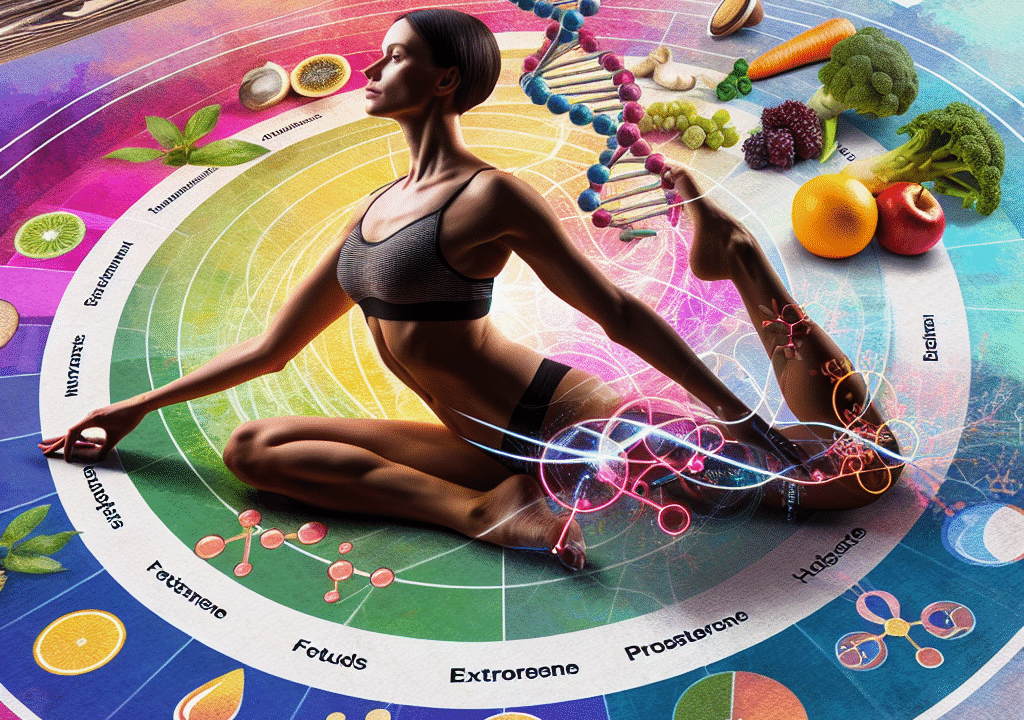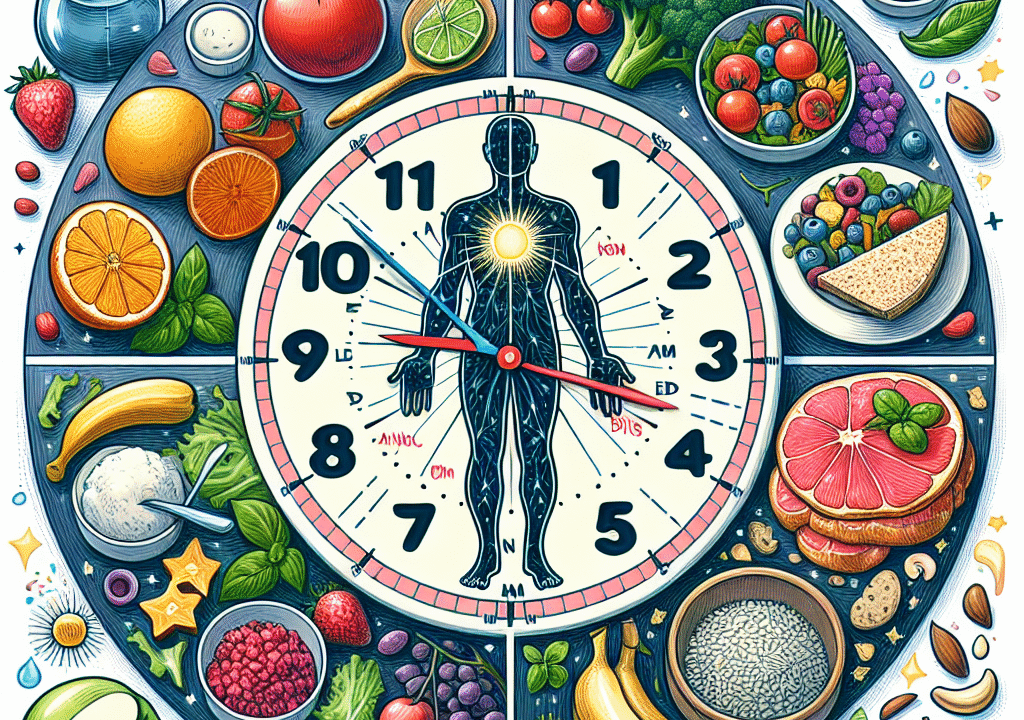Discovering the Micronutrient Map for Plant-Based Nutrition
In recent years, plant-based diets focused on optimal health have become increasingly popular. According to Statista (2023), over 10 million Americans now identify as vegan or vegetarian. Whether you’re fully committed or just exploring, a plant-centered diet offers numerous benefits—including a reduced risk of heart disease, lower cholesterol levels, and a smaller environmental footprint.
However, even well-intentioned meals can lack key micronutrients. That’s where The Micronutrient Map becomes a valuable resource—helping you prevent the most common nutrient deficiencies before they begin.
Why Micronutrients Are Essential for Plant-Based Eaters
While macronutrients like protein, fats, and carbohydrates often get the spotlight, micronutrients—vitamins and minerals needed in small amounts—are vital for overall health. They’re responsible for essential processes such as supporting the immune system, energy production, mental clarity, and maintaining bone density.
“Micronutrient deficiencies, such as those involving vitamin B12 or iron, can develop gradually and affect your well-being long before symptoms appear,” says Dr. Melissa Hart, a plant-based nutritionist and author of The Balanced Vegan Plate.
When not carefully planned, plant-based diets can lead to common nutrient gaps. But here’s the good news—these deficiencies are entirely preventable with the right knowledge and choices.
Top Micronutrients to Prioritize on a Plant-Based Diet
Explore The Micronutrient Map by focusing on these essential nutrients to maintain vibrant health on a plant-powered journey.
Vitamin B12: A Non-Negotiable for Plant-Based Diets
Vitamin B12 is essential for nerve health and DNA synthesis. Since it naturally exists almost exclusively in animal products, it’s a critical nutrient for anyone following a plant-based lifestyle.
Common Symptoms of Deficiency:
– Fatigue
– Memory issues
– Tingling or numbness in hands and feet
How to Get Vitamin B12:
– Consume fortified plant-based foods such as cereals, nutritional yeast, and plant milks
– Take a reliable supplement, preferably in the cyanocobalamin form
“Even mild B12 deficiencies can lead to irreversible nerve damage,” warns Registered Dietitian Angela Collins. “Regular supplementation is a must for my vegan clients.”
Pro Tip: Don’t depend solely on food sources—consistent supplementation, either daily or weekly, is the most reliable way to maintain adequate B12 levels.
Iron: Fuel for Improved Energy and Circulation
Although plant-based foods contain iron, it’s in the non-heme form, which is less efficiently absorbed by the body.
Common Symptoms of Deficiency:
– Dizziness
– Weakness
– Pale skin
– Shortness of breath
Plant-Based Iron Sources:
– Lentils, tofu, spinach, quinoa, pumpkin seeds
– Combine with vitamin C-rich foods like bell peppers, citrus fruits, and strawberries to enhance absorption
Pro Tip: Tea and coffee contain tannins that hinder iron absorption. Wait at least an hour after meals to consume these beverages.
Sample Meal Idea: Pair seasoned lentils with sautéed kale and a citrus vinaigrette to increase both flavor and nutrient absorption.
Omega-3 Fatty Acids: Brain and Heart Support
Omega-3 fatty acids, especially EPA and DHA, are integral to brain function, heart health, and vision. While these forms are primarily found in fish, plant-based diets provide ALA (alpha-linolenic acid), which the body must convert, albeit inefficiently.
Signs of Omega-3 Deficiency:
– Brain fog
– Dry skin
– Fatigue
Plant-Based Sources and Supplements:
– Flaxseeds, chia seeds, walnuts, hemp seeds
– Algal oil supplements (vegan source of EPA and DHA)
“For mood regulation and memory, omega-3s are essential,” explains Dr. Reed Morgan, a neurologist and advocate for plant-based nutrition.
Vitamin D: The Overlooked Vital Nutrient
More than 40% of U.S. adults, regardless of diet, are deficient in vitamin D, which is crucial for immune balance, calcium absorption, and mood stability (CDC, 2022).
Symptoms of Low Vitamin D:
– Depression
– Muscle aches
– Bone discomfort
Getting Vitamin D Naturally and Supplementally:
– Fortified cereals and plant milks
– Sunlight exposure (10 to 30 minutes daily, depending on skin tone and location)
– Vegan-compatible D3 supplements derived from lichen
Pro Tip: If sunlight is minimal during winter or in northern regions, maintaining vitamin D levels through supplementation can be especially important.
Calcium: Strengthening Bones Without Dairy
People often associate calcium with dairy—but there are many plant-based alternatives that support strong bones.
Symptoms of Insufficient Calcium:
– Brittle nails
– Muscle cramping
– Risks of osteoporosis over time
Top Calcium-Rich Vegan Options:
– Fortified soy milk, almond milk, calcium-set tofu, bok choy, and tahini
– Remember: Vitamin D supports calcium absorption, so aim to consume both together
Pro Tip: Spinach and Swiss chard are high in calcium but also contain oxalates, which can inhibit absorption. Opt for lower oxalate greens like kale for better effect.
Sample Meal: A tofu stir-fry with steamed kale, sesame seeds, and a glass of fortified almond milk ensures a calcium-rich dinner.
Zinc: Small Mineral, Big Impact
Zinc plays an important role in immunity, wound healing, and cellular growth. However, plant-based zinc sources can be less bioavailable due to naturally occurring compounds called phytates.
Symptoms of Zinc Deficiency:
– Recurring infections
– Hair thinning
– Slower healing wounds
Increasing Zinc Absorption on a Vegan Diet:
– Quinoa, lentils, pumpkin seeds, cashews, fortified grains
– Preparation methods like soaking, sprouting, or fermenting reduce phytate content and improve absorption
Pro Tip: Rotate legumes, seeds, and whole grains throughout the week to maintain healthy zinc levels.
Creating a Balanced Plant-Based Plate
With awareness, building a nutrient-dense plant-based diet can become effortless. Use these simple guidelines to nourish every meal:
– Fill half your plate with colorful fruits and vegetables
– Include legumes, tofu, or tempeh for protein
– Choose complex carbs like quinoa or brown rice
– Vary your intake of nuts and seeds daily
– Incorporate fortified foods such as cereals and plant milks
– Use supplements strategically when needed
Consider using a specialized vegan multivitamin to cover harder-to-obtain nutrients like B12, D3, and omega-3s.
Supplementation: A Smart Strategy, Not a Shortcoming
Supplements should not be seen as a failure in your diet, but rather as a tool for personalization and precision.
“Even people who eat everything often need vitamin D or omega-3 supplements,” says nutrition specialist Julie Yang, MPH. “It all depends on individual needs—not just dietary labels.”
Pro Tip: Start by requesting a full nutrient panel from your healthcare provider. Then supplement only those nutrients your body truly needs—nothing more, nothing less.
Thriving on a Plant-Based Diet with Confidence
The Micronutrient Map isn’t just a nutrition guide—it’s a tool for empowerment. Whether you’re transitioning to plant-based eating or are a seasoned vegan, understanding your micronutrient needs is an essential part of your wellness journey.
Don’t let minor deficiencies deter your goals. With informed food choices, variety, and targeted supplementation, your plant-based diet can be as nutritionally complete as it is compassionate.
Ready to elevate your health? Download our free printable Micronutrient Checklist and start fueling your lifestyle—one nourishing plate at a time.
Join the Conversation
Have tips, recipes, or questions about plant-based nutrition? Share them in the comments below—we’d love to hear from you!
References
– Statista (2023). Percentage of U.S. adults following a vegetarian or vegan diet.
– CDC National Health and Nutrition Examination Survey (2022)
– NIH Office of Dietary Supplements – Vitamin B12 Fact Sheet
– Journal of the American College of Nutrition (2022). “Omega-3s in Plant-Based Diets.”
– Academy of Nutrition and Dietetics Position Paper on Vegetarian Diets (2016)


